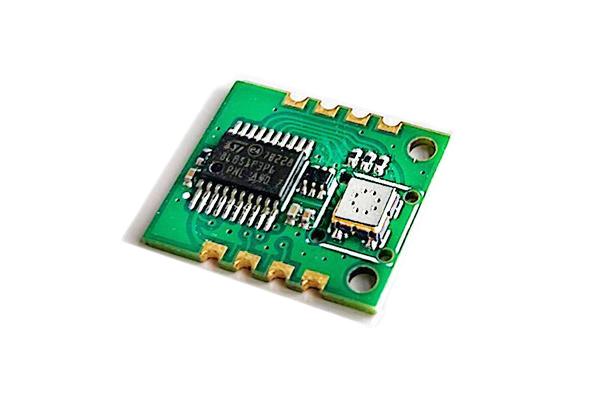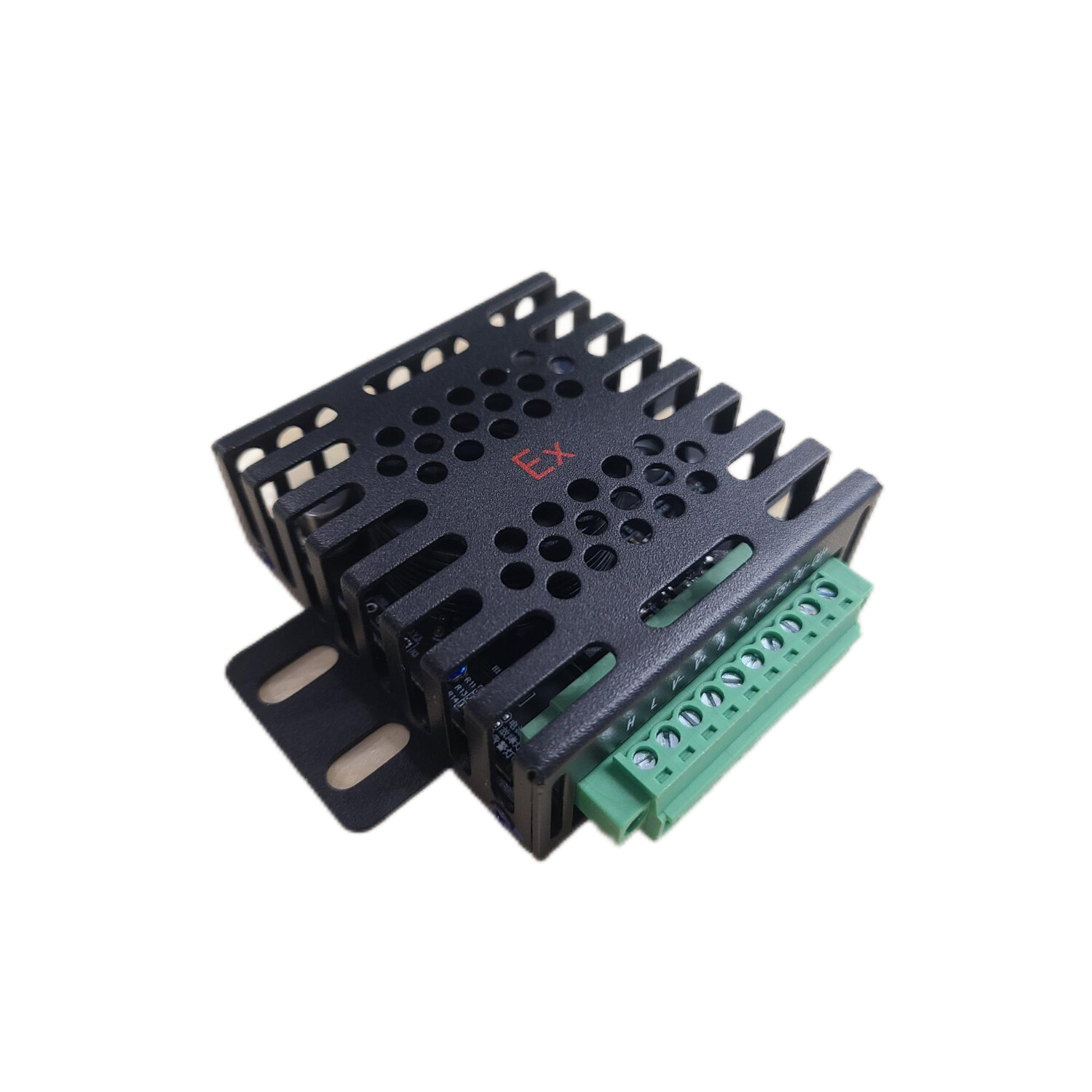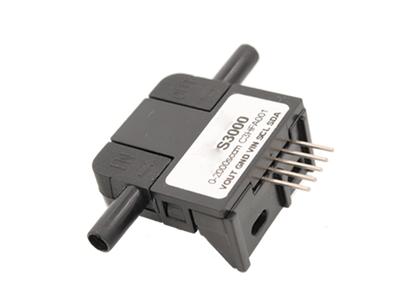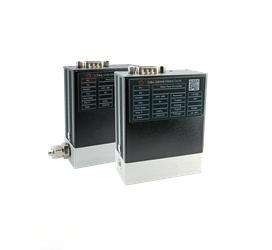Mass Air flow sensor is an instrument that converts the intake air flow rate into an electrical signal. The advantages of an air flow meter are minimal pressure loss and a wide range of measurable flow rates. The ratio of the maximum flow rate to the minimum flow rate of the air flow meter is generally above 20:1, and it is suitable for a wide range of industrial pipe diameters, with a maximum of 3m. The output signal is linear with the measured flow rate, with high accuracy, and can measure conductivity ≥ 1 μ The fluid flow rate of acid, alkali, salt solution, water, sewage, corrosive liquid, as well as mud and mineral slurry in s/cm. But air flow meters cannot measure the flow of gas, steam, and purified water.
Principles
During the use of an air flow meter, the gas flow through the meter drives the turbine blades to rotate. The number of revolutions of the impeller is proportional to the volume of gas passing through the air flow meter. A specially designed patented guide frame is installed at the inlet of the flow meter, which accelerates the airflow entering the flow meter as the flow rate increases. The design of the guide frame can eliminate any potential fluid disturbance, such as vortex or asymmetric flow. The driving force on the turbine blades also increases at the same time. This ensures that the flow meter can accurately measure within the allowable error range, even under low flow conditions. The airflow acting on the turbine blades is axial, and the turbine is installed on the main transmission shaft, which is equipped with high-strength ball bearings. After the gas passes through the turbine blades, the rotation of the turbine blades is reduced by the gear set. The pressure in the inlet channel of the air flow meter is restored, and the channel design can ensure the optimization of the flow state.
Application
Flow measurement is a science that studies the change in mass of objects, and the law of mass mutual change is the basic law of the development of things. Therefore, its measurement object is no longer limited to traditional pipeline liquids, and there is a problem of flow measurement where it is necessary to master quantitative change. Flow rate, pressure, and temperature are listed as three major detection parameters. For a certain fluid, as long as these three parameters are known, the energy it possesses can be calculated, and these three parameters must be detected in the measurement of energy conversion. Energy conversion is the foundation of all production processes and scientific experiments, so flow, pressure, and temperature instruments are widely used.
Air flow meters are widely used, and the application of flow measurement technology and instruments can be roughly divided into the following fields.
Industrial production
Flow instruments are one of the major categories of process automation instruments and devices. They are widely used in various fields of the national economy, such as metallurgy, electricity, coal, chemical industry, petroleum, transportation, construction, light textile, food, medicine, agriculture, environmental protection, and people's daily life. They are used to develop industrial and agricultural production, save energy, and improve product quality, An important tool for improving economic efficiency and management level holds an important position in the national economy. In process automation instruments and devices, flow instruments have two main functions: as detection instruments for process automation control systems and as a total quantity meter for measuring material quantities.
Energy metering
Energy is divided into primary energy (coal, crude oil, coalbed methane, petroleum gas, and natural gas), secondary energy (electricity, coke, artificial gas, finished oil, liquefied petroleum gas, steam), and energy carrying working fluids (compressed air, oxygen, nitrogen, hydrogen, water), etc. Energy measurement is an important means of scientifically managing energy, achieving energy conservation and consumption reduction, and improving economic benefits. Flow meters are an important component of energy metering instruments. Commonly used energy sources such as water, artificial gas, natural gas, steam, and oil use an extremely large number of flow meters, which are indispensable tools for energy management and economic accounting.
Environmental protection
The discharge of smoke, waste liquid, sewage, and other pollutants seriously pollutes the atmosphere and water resources, posing a serious threat to the human living environment. The country has listed sustainable development as a national policy, and environmental protection will be the biggest issue of the 21st century. To control air and water pollution, it is necessary to strengthen management, which is based on quantitative control of pollution levels.
Transportation
There are five ways: railway, highway, air, water, and pipeline transportation. Although pipeline transportation has already existed, its application is not widespread. With the prominent environmental issues, the characteristics of pipeline transportation have attracted people's attention. Pipeline transportation must be equipped with flow meters, which are the eyes for control, distribution, and scheduling, as well as essential tools for safety supervision and economic accounting.
Biotechnology
The 21st century will usher in the century of life sciences, and industries characterized by biotechnology will achieve rapid development. There are many substances that need to be monitored and measured in biotechnology, such as blood, urine, etc. The difficulty of instrument development is extremely high, with a wide variety.
Water system
Marine meteorology, Rivers and Lakes. These areas are open flow channels, and generally require the detection of flow velocity and then the calculation of flow rate. The physical principles and fluid mechanics foundation on which flow meters and flow meters are based are common, but there are significant differences in instrument principles, structures, and usage conditions.
LATEST NEWS
ONLINE CONSULTATION
For inquiries about our products or pricelist, please leave your email to us and we will be in touch within 24 hours.
GOT ANY QUESTIONS
If you have something on your mind, just let us know!
We are more than happy to answer all your inquiries.

For inquiries about our products or pricelist, please leave your email to us and we will be in touch within 24 hours.
Add: No.9999 Jingshi Road, Lixia District, Jinan City, Shandong Province, China
USA Research Center
Add:2455 South Rd, Poughkeepsie, NY 12601 USA
By clicking "Allow All", you agree to the storage of cookies on your device to enhance site navigation, analyze site usage and assist with our marketing efforts. Cookie Notice




